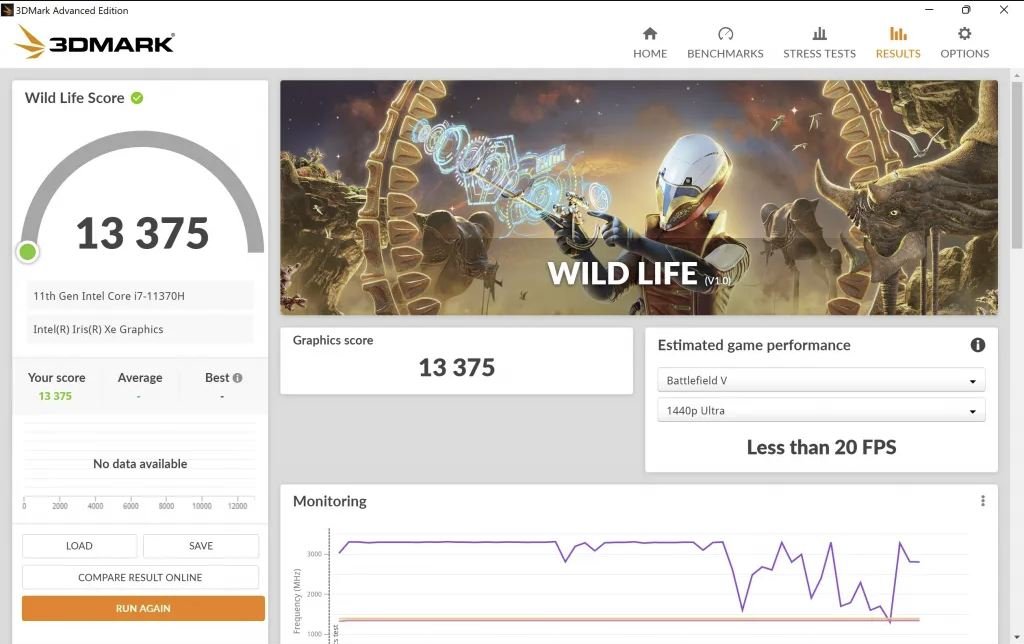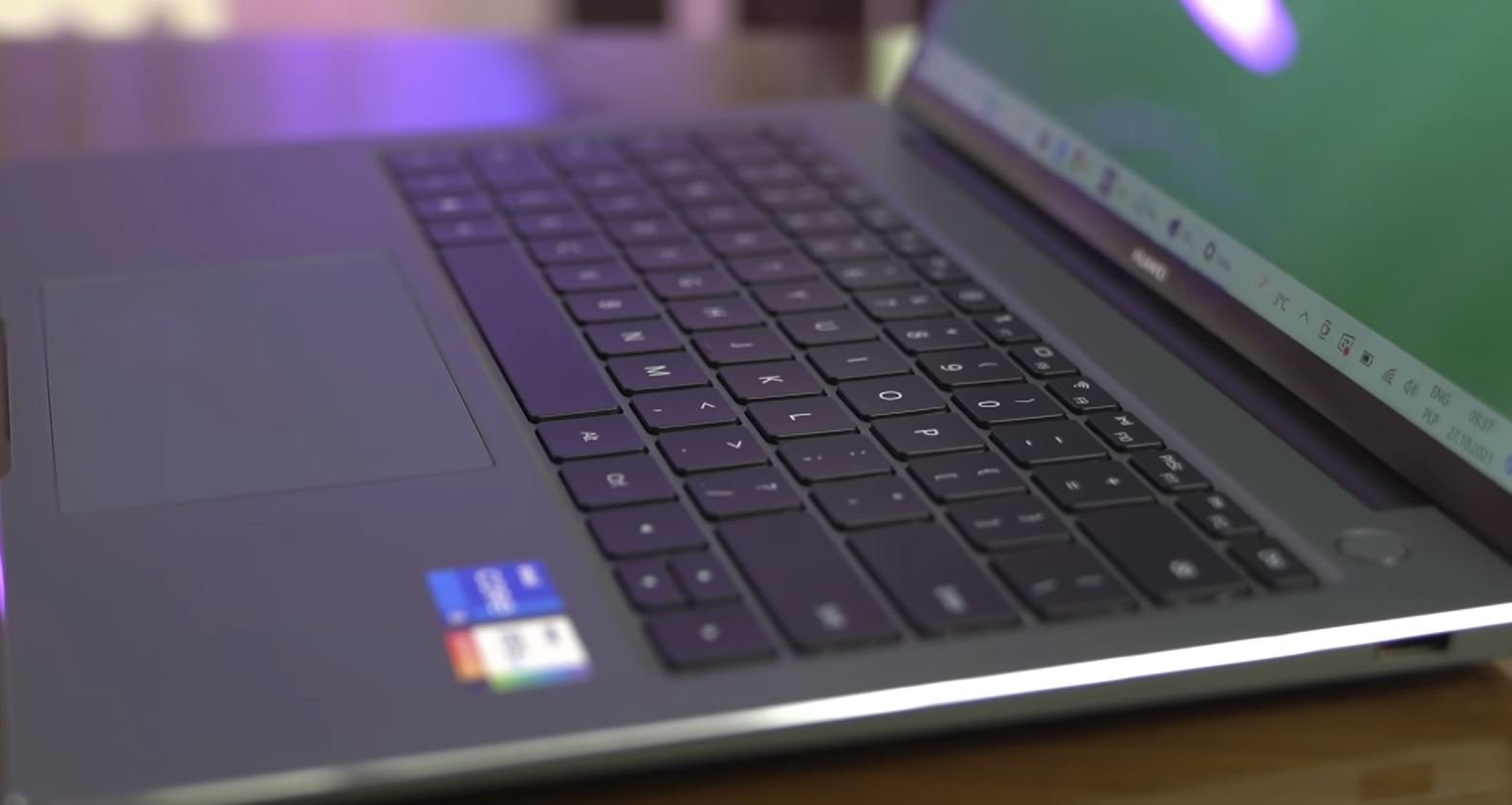Huawei, initially a smartphone maker, has diversified its activities in recent years. With tablets than computers, the manufacturer is expanding its range over the months. This Huawei MateBook 14s was presented to us in October. It marks the manufacturer’s return to the computer market.

The entire body of the Huawei MateBook 14s is metal and looks and feels sturdy. Inside, it is also made of aluminum.
Underneath the computer is two large glides, which hold the laptop and elevate it slightly on a desk. Their anti-slip potential isn’t the most convincing we’ve found, but it’s fine on any surface. Overall if you don’t push the computer, it is going very well. With this, the two speakers on the sides and a ventilation grille slightly reveal the two small fans.
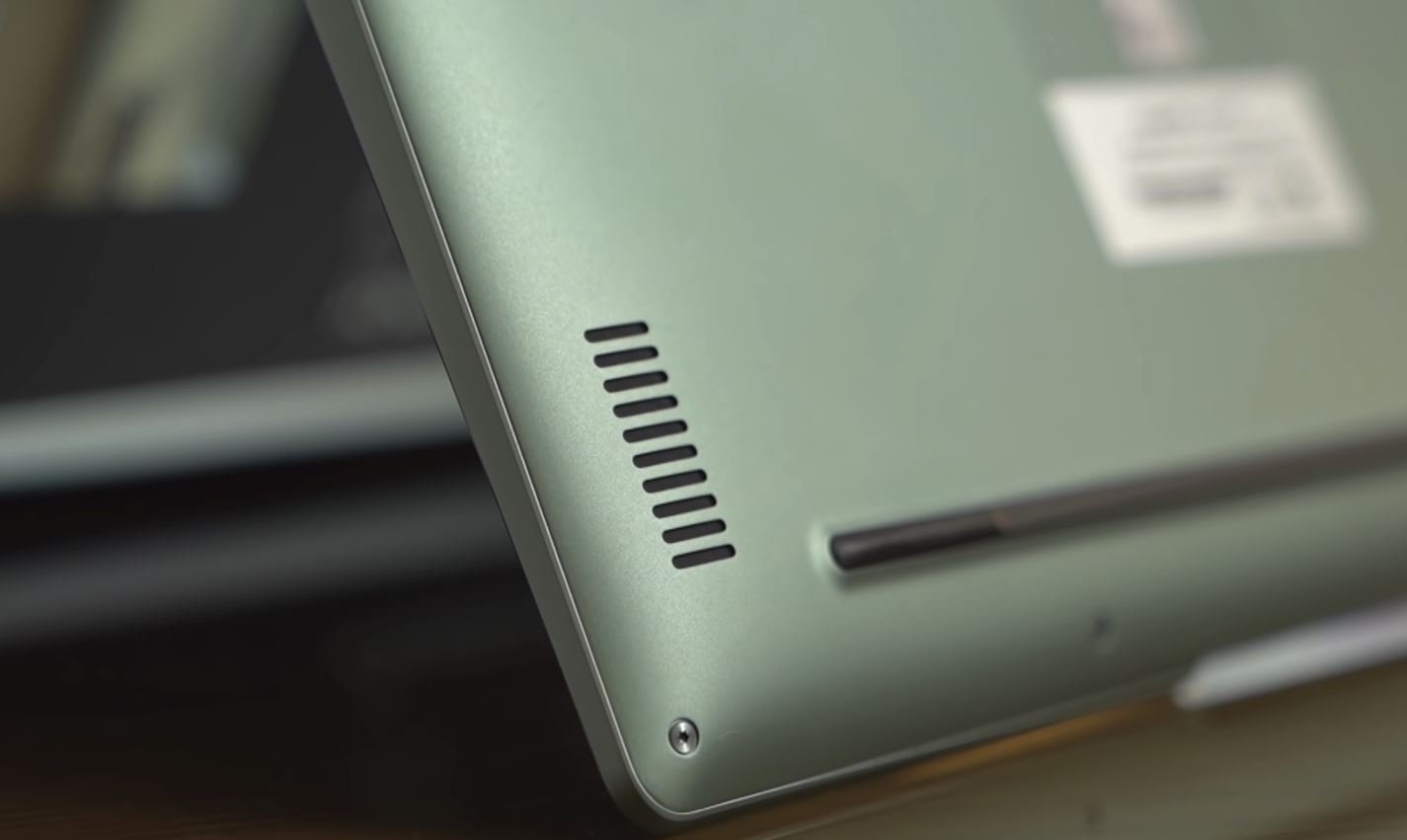
Key Specification
| Huawei MateBook 14s | |
| Released | 13th Sep 2021 |
| Processor | Intel Core i7-11370H Processor |
| Display | 14.2 inches |
| Memory | 16 GB LPDDR4x Dual Channel |
| Camera | 720P HD camera |
| OS | Windows 10 Home 64-bit |
Design
| Dimensions | 313.82 x 229.7 x 16.7mm |
| Weight | 1.43 kg |
| Screen Size | 14.2 inches |
| Resolution | 2520 x 1680, 213 PPI |
| Colour | Spruce Green, Space Gray |
| Display Type | 3:2 |
| Build Material | Approx. 178 ° (Typical) |
It is a fact, it is not easy to be original when designing a laptop, what is more, an ultrabook. The MateBook 14s does bring some notable changes, however, and some sometimes brutal changes from what Huawei was doing before.
We find an elegant computer with an elegant design. While it doesn’t have the design of a MacBook Air, it looks a lot like it, however, but Huawei has provided some personal touches, starting with its aluminum shell laminated with sand. It is not a magnesium frame here as the Acer Swift 5 can offer, but in aluminum, which is much more robust.
However, we feel a little cold when we put our hands on the computer when we have just started it, but it is less evident than on a MacBook. On the other hand, the MateBook 14s has the advantage of heating a bit more, which can heat the metal and make the computer more pleasant; who doesn’t hate putting their hands on a cold computer in the dead of winter?
On the back, on its shell, the MateBook 14s is quite sober, apart from the inscription “HUAWEI,” which we certainly cannot miss. On the other side, where we find the screen, we notice a lot of changes. First, Huawei was keen to offer the thinnest possible edges. It’s pretty successful indeed, with one thing that changes completely compared to other computers from the manufacturer.
Overall, the Huawei MateBook 14s is well finished, elegant, and pleasant to use. In addition to that, the screen is touch, which allows to adapt it with more and more features of Windows 11. However, that does not make the convertible PC like the Dell XPS 13 2 in 1.
Display
Huawei does not keep it simple when it comes to screens and takes us out of Apple-style resolutions. So it’s a 14.2-inch panel that we have on this MateBook 14s. It was not very difficult to determine the size of the screen, indeed. However, the resolution here is 2520 x 1680 pixels, which Huawei loves to offer for a display ratio of 3: 2.
A quick calculation tells us that the pixel density is around 213 DPI, which is fine in itself for a laptop screen. There is no need to tickle the 326 DPI; here, at a distance of 40 to 50 centimeters from the screen, it is impossible to distinguish the pixels. There is also no need to offer a 4K Ultra HD panel; it would pump more performance and autonomy than anything else, for a result hardly better.
What I appreciate with this MateBook 14s is the accuracy of its screen. Indeed, the latter is clear and very pleasant, offering very accurate colors, close to reality. It is undoubtedly not an AMOLED panel so as not to make the computer too expensive for the consumer. Large AMOLED panels cost much more and are not essential when you have such a beautiful LED display. However, we take advantage of the DCI-P3 color space and its 1.07 billion colors.
In addition to that, the screen is touch-sensitive and covered with anti-reflective glass. As for the reflections at first, in fact, they are hardly visible. I didn’t manage to make out any except the part below the screen, on the black frame. If you have the sun behind you, the reflections will be seen, but a neon in an office goes almost unnoticed. On the touch side, the latter is responsive but beware of fingerprints on the screen.
Huawei has also added a little “one more thing,” namely a 90 Hz panel, in its laptop. Very popular on the latest Android smartphones and even on the iPhone 13 Pro, the general public is discovering high frequencies a few years after the field of gaming. Very useful in this last area indeed, to take advantage of a perfect fluidity and increased responsiveness, what can be used for general public computers?

The screen switches from 60 Hz to 90 Hz by activating the function and R (FN + R) keys. We regret the latency of a few seconds during which the screen goes black and then shows us either 60 or 90 Hz, but it’s nice. The goal of 90 Hz on a laptop computer is to provide more pleasant fluidity, allowing the user to increase their visual comfort. Certainly, but between us, it’s still quite a gadget. We don’t play with the PC; I don’t have videos with more than 60 fps to edit, YouTube is not available in 90 or 120 fps… The functionality is there, it is a little more pleasant, but it is not. It’s not a necessary revolution either.
On the upper part of the screen, we find the 720p webcam accompanied by the facial recognition system. Windows Hello facial recognition works very well and allows you to unlock the PC quickly with no other action than looking at it.
Performance
| GPU | Intel Iris Xe Graphics |
| RAM | 16 GB LPDDR4x Dual Channel |
| Internal | 512GB / 1TB NVMe PCle SSD |
| Expansion | No |
| OS | Windows 10 Home 64-bit |
The version we received of the MateBook 14s has an Intel Core i7 11370H processor, 16 GB of RAM in LPDDR4, and an Intel Iris X graphics chip. The latter is the new chip from Intel on its processors to offer entirely correct graphics performance. However, I don’t plan on playing with it either, it’s not an RTX 3080, and the PC isn’t designed to play, although some features we’ll cover later would allow it.
With this, still, in our version, we have 512 GB of SSD storage. Note, however, that there is a version with 1 TB and a USB 4 / Thunderbolt 4 port. It is a shame not to have equipped all the versions with a Core i7, for example, a USB 4, only the most recent version. More upscale can take advantage of it; I don’t quite understand the idea behind it.
Also, be aware that a version of the MateBook 14s has an Intel Core i5 if you don’t need all the performance of the Core i7 and want to pay a little less. All the details of the MateBook 14s are available in our article. Now let’s move on to benchmarks with a first overall opinion given by PerformanceTest.
[infogram id=”2fc43f4b-5f26-4559-98b8-b166905d349f” prefix=”qZT” format=”interactive” title=”Performance test results”]
With 3715 points on PerformanceTest, in optimal performance mode and plugged in, to get the best out of it, the MateBook 14s does not disappoint. The processor brilliantly passes the benchmark for such a thin laptop; the RAM and the SSD are also excellent. However, we expect to have less performance on the graphics part. Indeed, as mentioned above, an Intel Iris X does not send the wrath of war in terms of performance. The PC, however, is not made for playing GTA or Red Dead II. Via the FN + P keys, you can switch to high-performance mode.
Not all benchmarks will necessarily be the same. We have the Core i7 11370H from Intel in our version, which was loaned to us by Huawei. However, there is also a version of the computer with a Core i5.
The MateBook 14s GeekBench score is 5961 points. This is very good for a CPU that is not intended to offer extreme performance; we also note the excellent work done by Intel, especially since it is a 4-core CPU only. Here, unlike smartphones, all the cores do almost the same job; we can notice a single-core and multi-core score in perfect correlation with the number of cores of the CPU.
As for the RAM, we have 16 GB of LPDDR4, which allows us to perform many tasks in parallel on the computer. Fans of 35 or 40 tabs in Opera or Firefox like me will have no problem with that!

As for speeds, they are 56 Gb / s read, and 58 Gb / s write. It’s pretty rare to have better write speeds, though. The latencies are, however, relatively high, with a little over 100 ns.
Our version of the Huawei MateBook 14s comes with an M.2 SSD, of course, but only 512 GB. There is also a version with a 1TB SSD, but fortunately, no lower storage capacity. The lack of a 256 GB version is good news. Indeed, this capacity is very high for a smartphone but far too low for a computer. Huawei did not fall into the trap of the cheap model with discounted performance.
The SSD speeds are not bad, far from it, with 3478 MB / s in reading and 2300 MB / s in writing. However, I think that we are on PCIe 3 and not 4. Indeed, the speeds of this type of SSD are pretty limited compared to newer generations. However, this is more than enough for what the vast majority of users do with their laptops.
GPU- To have carried out some benchmarks, we used our usual tools, namely the 3DMark software. We can see that on all the benchmarks, certainly, in very high quality, and in 1440p, the PC offers us less than 30 fps in all cases. This is normal; the Intel Iris X chip is not made to play.
Multimedia
| Headphone jack | No |
| Loudspeaker | Speaker x 4 |
| Microphones | Microphone x 4 |
Huawei is changing the game and offering excellent audio quality on this MateBook 14s! With four speakers hidden under the computer, Huawei Sound’s promise for premium audio quality is kept. Admittedly, it is not the quality of a Dell Latitude 9420 that we had blown away, but it is still very respectable for a computer half the price. If it does not replace a Bluetooth speaker, the sound quality is there, the power is there, and the bass, although a little too light, is also there.
Battery Life
| Capacity | 60Wh |
| Type | Lithium polymer |
| Power Supply | 90W USB-C Power Adapter |
| User-Replaceable | No |
Autonomy is the main argument of ultrabooks. Yet not with Intel Evo certification, the MateBook 14s offers excellent autonomy with its 60 Wh battery. In everyday use (internet browsing without videos, writing this MateBook 14s test, watching a film, etc.), we obtained more than 10 hours of battery life.
On the charging side, Huawei is not stingy and provides a 90 Watts charger, allowing the MateBook 14s to be recharged quickly. Charging is done in USB-C via one of the two ports on the left; it doesn’t matter which one.
Connectivity
| Bluetooth | Bluetooth 5.1 |
| Wifi | 2X2 MIMO, Wi-Fi 6 |
| NFC | IEEE 802.11a/b/g/n/ac/ax, 160 MHz 2.4 GHz and 5 GHz 2 x 2 MIMO WPA/WPA2/WPA3 |
| Ports | USB-C x 2 (support data, charging and DisplayPort) USB3.2 Gen1 x 1 HDMI x 1 3.5 mm headset and microphone 2-in-1 jack x 1 |
On the edges, which are also quite thick, Huawei has accommodated connectivity in quantity. The manufacturer did not want to race the thinnest computer in the world but the most practical ultrabook. There are, therefore, USB-A and HDMI ports, which are very appreciable. However, we will see that the connection of this ultrabook is not as perfect as expected.
We benefit from a Wi-Fi 6 connection, the latest Wi-Fi standard in 2.4 and 5 GHz, which is a bit normal at the same time on this type of computer. The Bluetooth 5.1 is also present. Like all Huawei products now, you can take advantage of Huawei Share, a practical system for exchanging data between devices (smartphones, tablets, computers).

On the left side you will find:
- 1x USB Type-C to charge your device. There is a small indicator next to it.
- 1x USB Type-C with DisplayPort support
- 1x HDMI
- 1x 3.5 headphone and microphone
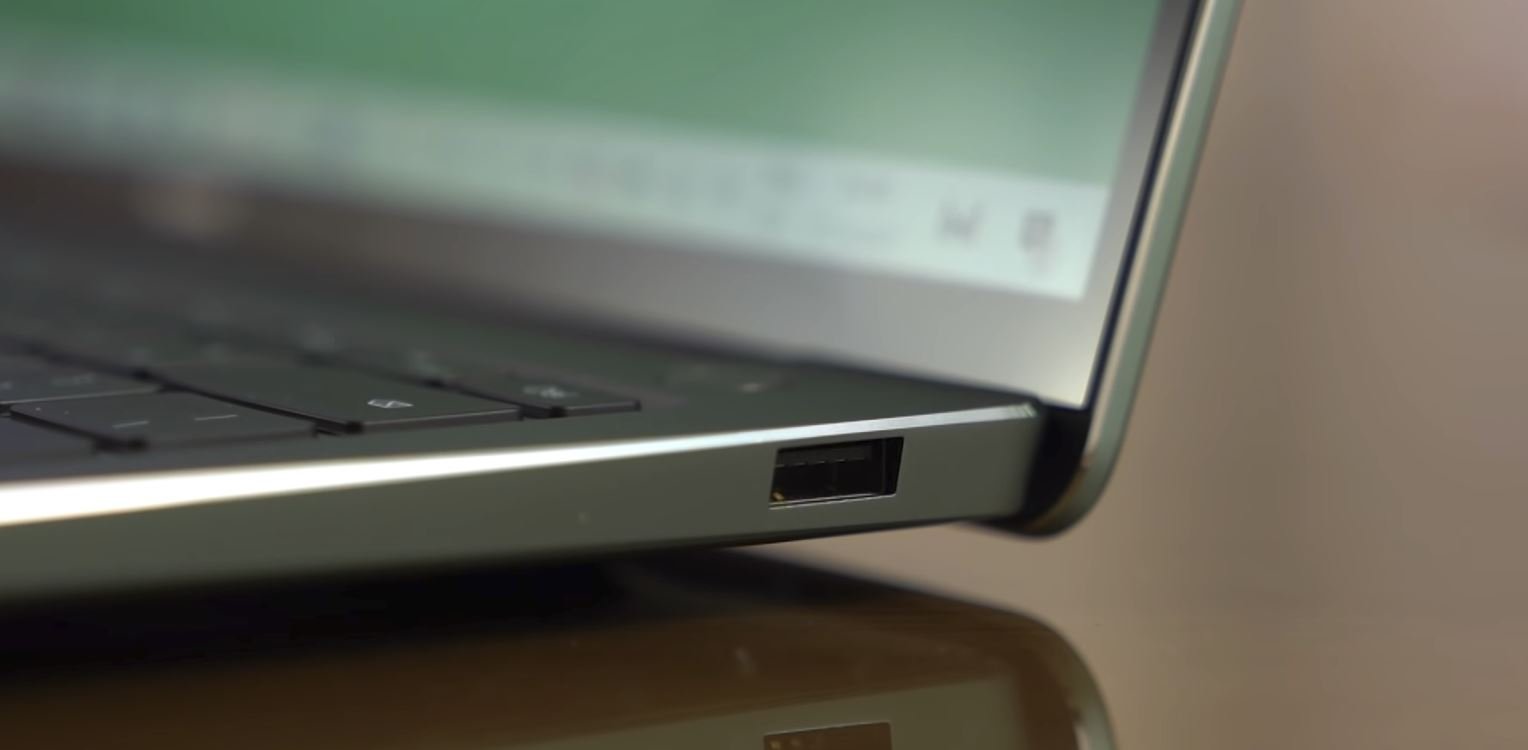
On the right side:
- 1x USB Type-A 3.2 GEN1
However, it is unsatisfactory that the USB 4 port as the second USB-C port is reserved exclusively for the i7 version / 16 GB of RAM / 1 TB of storage; for my part, I have the 512 GB version of storage. The USB 4 connection makes it possible to increase speeds considerably compared to USB 3.2, even Gen 2.
However, we can congratulate ourselves on finding a USB-A port to connect certain accessories and an HDMI port, making it possible without an adapter to connect a video projector or an external screen, for example.
Keyboard
There is the keyboard and the trackpad, accompanied by a start button with the fingerprint sensor of the computer. The keyboard is naturally backlit, and the trackpad is quite large, although Apple’s MacBook Airs offer an even larger one. The edges are beveled, allowing the shiny side of the aluminum to appear, to enhance the qualitative side of the device.
The keyboard of the Huawei MateBook 14s is a chiclet model like on many laptops. The keys offer a 1.5mm travel, which is relatively high compared to some other keyboards I’ve been able to test on other laptops. The thing is, it shows. It is necessary to get used to it; adaptation is required for this race so high on an ultrabook. However, after a few minutes, you adapt.
The main thing is not to sit too low about the height of the computer. Otherwise, it will be unpleasant to enter text. However, in good conditions of use, it will not be disagreeable to use the keyboard. However, the keys are made of ABS, which means that fingerprints can settle there more quickly than with keys made of PBT. Huawei is putting keys in PBT already for the comfort, aesthetics, and backlighting of the keys. During my test of this MateBook 14s, the keyboard stayed clean.
The PC’s webcam is now at the top of the screen, and the MateBook 14s doesn’t need a notch to accommodate relatively thin edges and a webcam at the top. There is no more front camera in the key between F6 and F7, which was handy for the freaked out webcam hackers, which is not done that much, especially with the average user. However, it is pretty disturbing for people like me to see his double chin very clearly visible from the lowering of the head! We also find the inscription of the logo of the mark at the bottom of the screen.
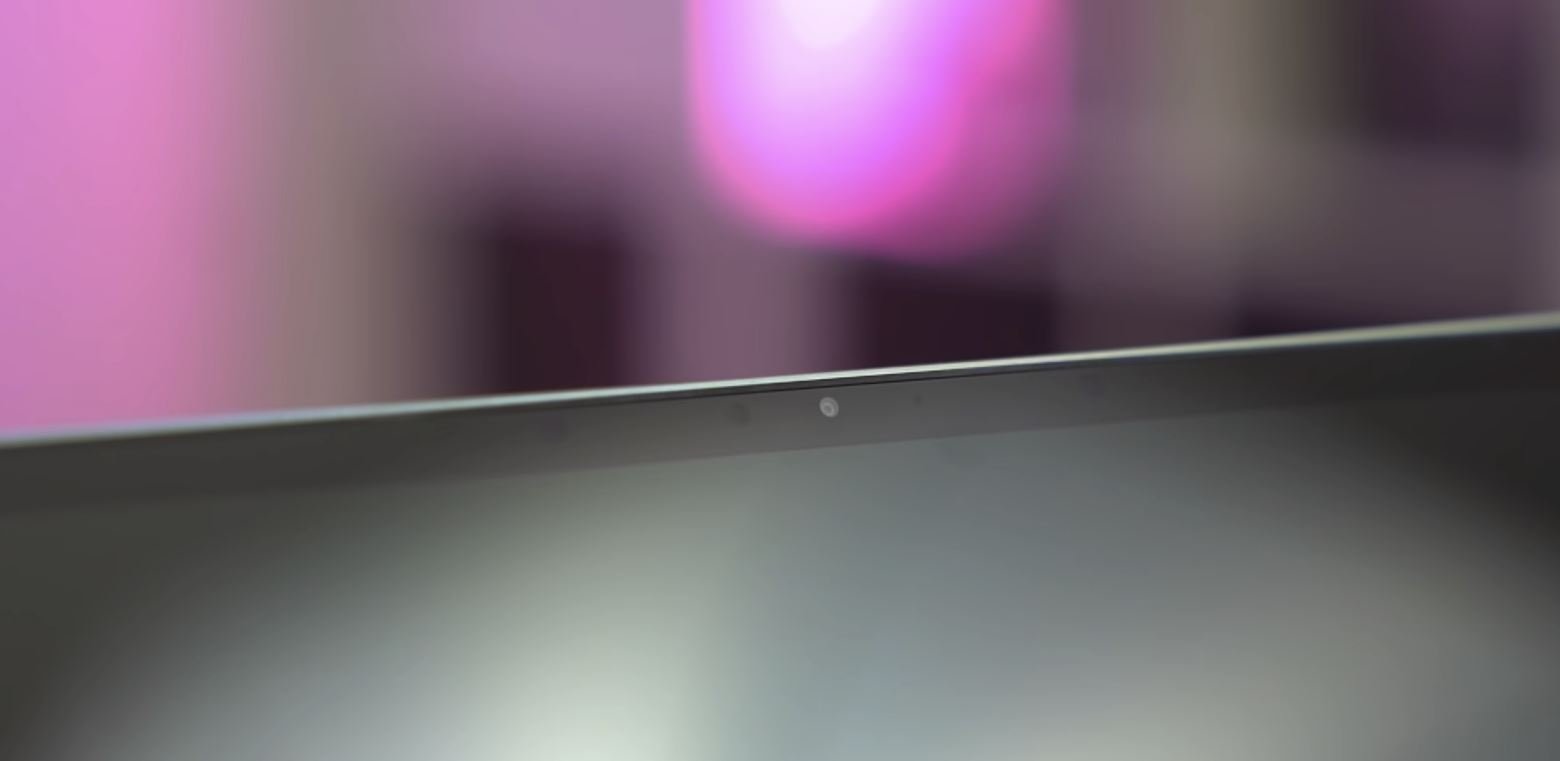
As for the backlighting, only two powers are possible, either 50% of brightness or 100%. For my part, used to a MacBook Air with irreproachable backlighting, I am a little on my hunger here. The backlight is undoubtedly there, but in conditions of a little low light, it lacks power. I would gladly have appreciated something more fierce, more luminous. There, it goes perfectly in the middle of the night, but with a bit of ambient light on a cloudy day, we do not see much.
As for the trackpad, it is not bad, far from it. However, its relatively compact size makes me think that Huawei could have come up with something even more borderless, like the screen. Never mind, it’s not embarrassing for users who, like me, always appreciate having a mouse in their hands. But the clicks of the trackpad would have undoubtedly deserved to be a little softer, with a noise that clicks less.
At the top right of the keyboard is the fingerprint sensor, tucked away in the start button.
Conclusion!
The Huawei MateBook 14s is an excellent ultrabook. If it is not ultra-thin, its rich connectivity and good performance justify this for the best. Admittedly, the price may seem a bit high, but it looks pretty decent given the computer’s performance.



